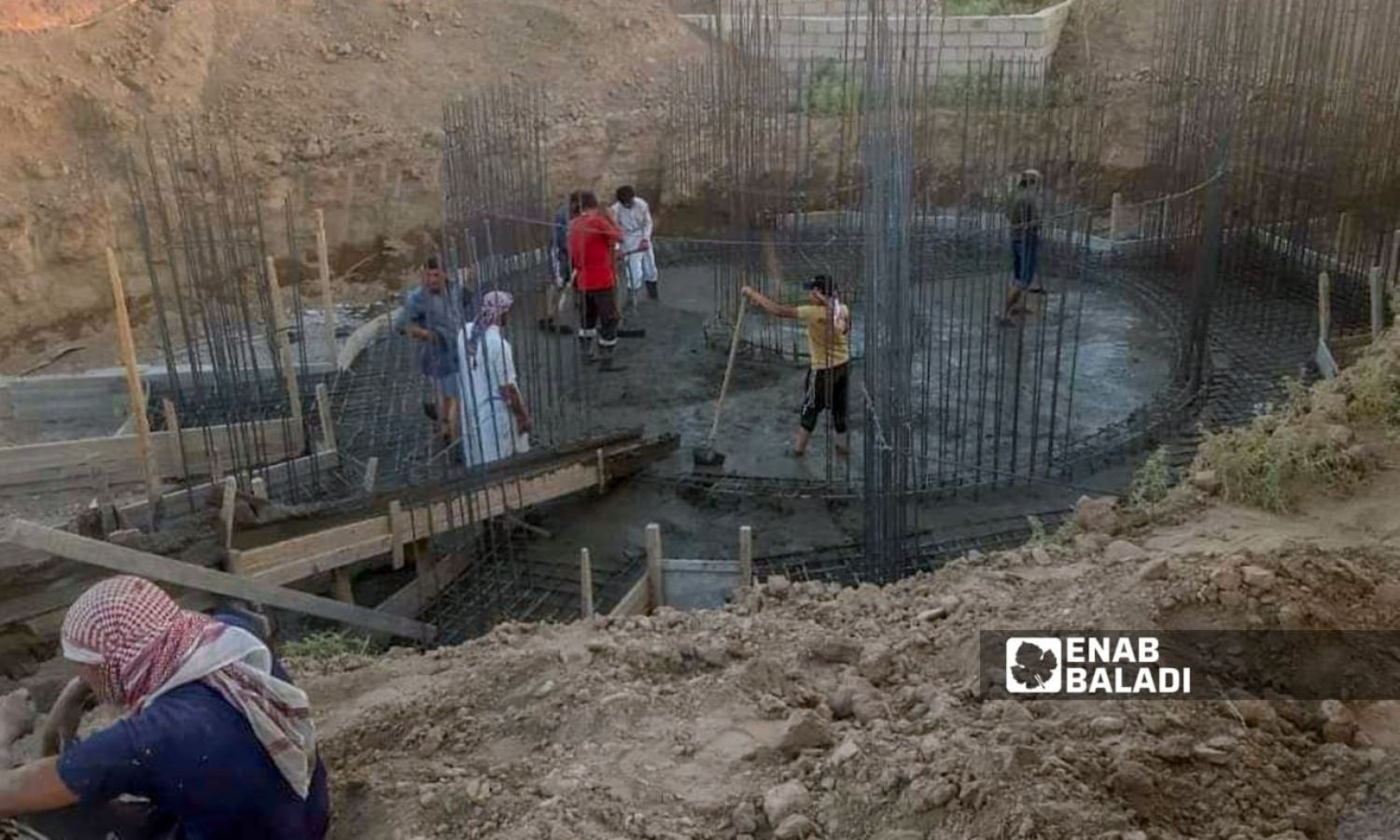



A water crisis has hit the rural areas of Deir Ezzor following the shutdown of several pumping stations in the eastern countryside, coinciding with the increasing problem of water supply in most areas under the control of the Autonomous Administration of North and East Syria (AANES).
The crisis has forced residents of the region to buy water through private tankers, with prices ranging from 30,000 to 50,000 Syrian pounds per tanker, depending on the distance and quantity purchased.
Osama al-Khudair, a resident of the area, told Enab Baladi that despite the presence of the Euphrates River, most villages and towns in the rural areas of Deir Ezzor suffer from a shortage of drinking water due to “malfunctions, theft of support, or the negligence of the services committee.”
The Syrian Jazira region, under the control of the Autonomous Administration, has experienced consecutive waves of drought in recent years, especially since late 2020. The level of water flowing from Turkey to the Syrian part of the Euphrates River has decreased by 65%, according to a report by the United Nations Office for the Coordination of Humanitarian Affairs (OCHA) in 2020.
More than 5 million people in Syria directly rely on the river as a water source. 54 out of 73 water stations along the western bank of the Euphrates River have been significantly affected by the serious drop in water levels, according to the OCHA report in June 2021.
Several locals confirmed to Enab Baladi that water has not reached all neighborhoods for nearly two months, forcing them to rely on tankers. However, one tanker does not meet a family’s needs for more than two to three days.
The United Nations condemned the conversion of the water station of Abriha village in eastern Deir Ezzor to a military site by the Syrian Democratic Forces (SDF), affirming that this has deprived thousands of civilians in the area of drinking water.
Last November, Enab Baladi published an investigation titled “Drought sweeps Syria: Water war is coming,” discussing Syria’s drought and water crisis. It explored the manifestations of water scarcity in different conflict-ridden regions of Syria, as well as the decline in its main water sources. It also engaged with officials, experts, and specialized researchers to examine the environmental, economic, and political impacts and repercussions.
Former mayor of al-Susah in the eastern countryside of Deir Ezzor, Khamees al-Attiwi, told Enab Baladi that the main water station in al-Susah suffers from old networks that have not been replaced since 1994, with only minor repairs occasionally carried out.
He added that a main line of al-Susah Municipality’s projects has been extended to the Tadamoun neighborhood, and there is a generator for the residents inside the station itself. However, frequent breakdowns have rendered it useless.
There is also a modern Perkins generator provided by a charity organization that has been out of service for almost two years. Several requests have been submitted by the people’s municipality and the Hajin Water Unit to repair it, but there has been no response from the Services Committee in the Civil Council of Deir Ezzor so far.
A source from inside the station (who refused to be named because they are not authorized to speak to the media) told Enab Baladi that the main reason for the pumping stoppage is the lack of an electric generator to operate the pumps. The responsible services committee provided nothing but promises to replace it with a new generator two months ago.
Al-Attiwi mentioned that the municipality borrowed a generator from the al-Bubadran water station through the Hajin Water Unit. However, this generator itself is old and prone to frequent breakdowns, and it stopped working two months ago. It was later transferred to the Services and Municipalities Authority for repair but has not been returned since then.
Rama, an employee at the Civil Council in the area (who declined to provide her full name for security reasons), told Enab Baladi that the residents of al-Susah, al-Bubadran, and some villages in Hajin have not found alternatives or solutions in the absence of the Autonomous Administration. This has forced them to purchase water from tankers that have recently become active.
The price of a tanker with a capacity of ten barrels ranges from 30,000 to 50,000 Syrian pounds, depending on the distance traveled by the tanker (which is approximately two to three dollars and a half).
She also pointed out that residents have filed numerous complaints during several meetings, either in al-Susah or through the main councils. They have also formally addressed the Services Committee in Hajin and the Civil Council in Deir Ezzor, but to no avail. The number of affected individuals exceeds 100,000 due to the suspension of pumping stations.
Syria has 16 rivers and tributaries, five of which are shared internationally (the Euphrates, Tigris, Orontes, Yarmouk, and Southern Great River). These rivers represent approximately 75% of the country’s total organized surface water resources and over 45% of its available water resources, according to a report by Fanack Water, a specialized website studying water issues in the Middle East, in April 2019.
if you think the article contain wrong information or you have additional details Send Correction